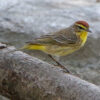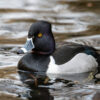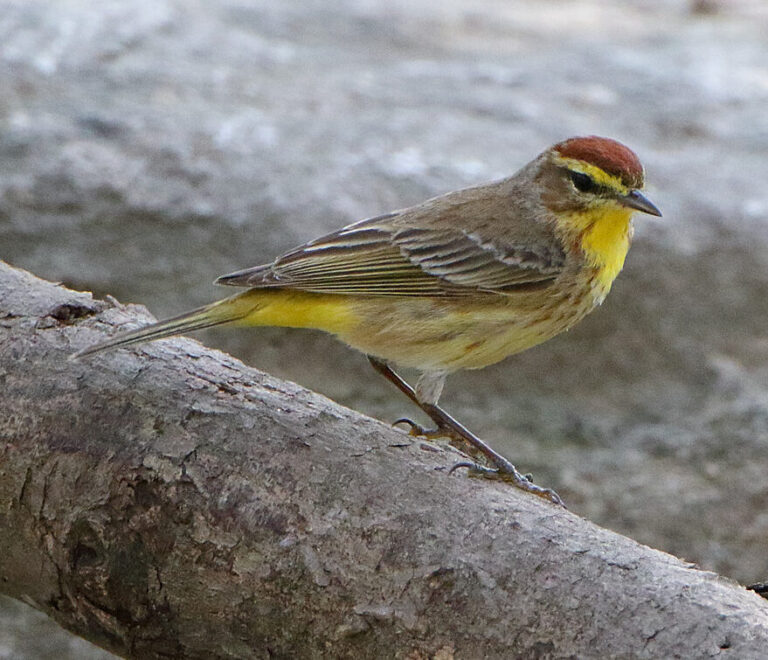
Palm Warbler, Setophaga palmarum
Bill Rowe
As we’ve noted before, Missouri has a rich diversity of warblers: 36 regular species, of which 17 are breeding birds, leaving 19 more that we see only in migration, en route to and from their northern nesting grounds. Of this latter group, one of the easiest to recognize, whether you are on a field trip or just watching in your own yard, is the Palm Warbler. This bird owes its name to an early German naturalist, Gmelin, who received specimens of it from the Caribbean, where it wintered; he gave it the specific name palmarum, “of the palms,” which it has kept ever since,
per the rules of scientific nomenclature, even as its genus name fluctuated. In fact, it doesn’t breed within a thousand miles of a palm tree, flying far to the north to build its nest around the margins of spruce bogs
in Canada, or in Canadian-type forests in northern Minnesota, Wisconsin, and Maine. On their way south in fall, Palm Warblers will stop for the winter along our southern coasts and the Florida peninsula as well as the
islands of the Caribbean, with some continuing to Central America but not farther. Predictably, this itinerary makes it a fairly early-arriving warbler in spring, peaking around late April, and a late-departing one in fall, with a peak in early October. At those peak times it can be numerous and easy to find, and also easy to watch, as it does much of its busy foraging for insect prey within ten or twenty feet of the ground or actually on the ground, unlike most other warblers. It will also identify itself pretty quickly by a persistent habit of bobbing its tail as it moves around in the shrubs, weed patches, and woodland edges that it prefers. It won’t be long before you are calling them out in a matter of seconds: “Hey, there’s another Palm…”
IDENTIFICATION: Besides the tail-bobbing trait just described, Palm Warblers have a distinctive, somewhat understated color pattern that differs a bit between those we see most of the time here in the midwest
(nominate subspecies palmarum or “Western Palm”) and those seen mostly east of the Appalachians (subspecies hypochrysea or “Yellow Palm”). Our Western Palms in spring are yellow on the throat and the undertail, dull buff to off-white in between with some fine streaking, and rusty-reddish on the crown. Males and females are alike. In fall they can look plainer, just brownish on the back and finely streaked on the breast, but they still show bright yellow under the tail and some yellow on the rump. Once in a while, a Yellow Palm will show up in Missouri, so it’s possible to see a bright yellow one among the Westerns; see photo below. The song is a short series of buzzy cheep notes, fast enough to be called a trill.
ST. LOUIS STATUS: As noted above, Palm Warblers come through on the early side, mid-April to mid-May, and then again on the late side in fall, late September to late October, with the outside possibility of seeing one in the winter. On a good day you might find a dozen as they flit about in trees, shrubbery, and (often) grasses and weeds.
Learn more and listen to the songs and calls of Palm Warblers here.
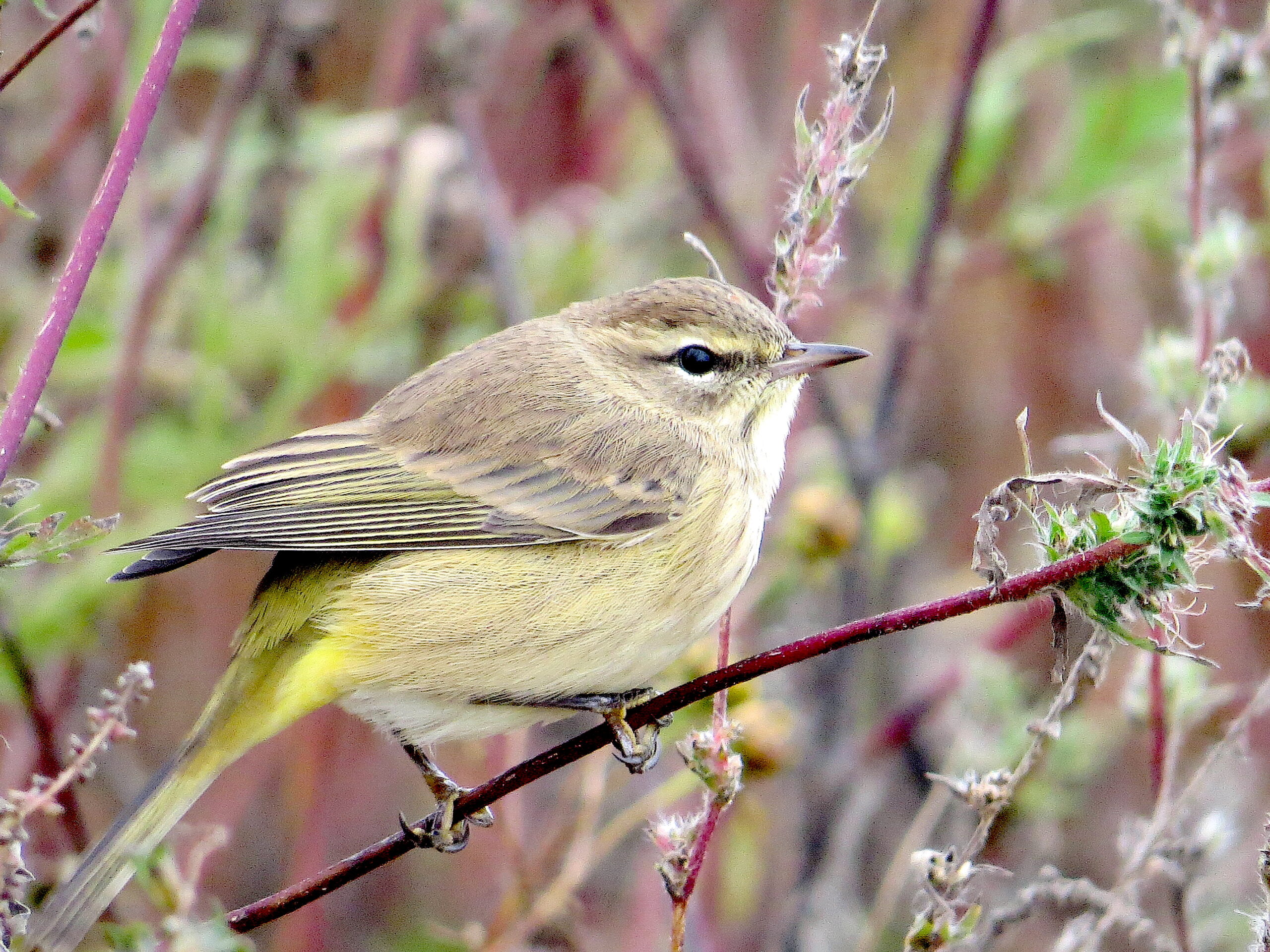
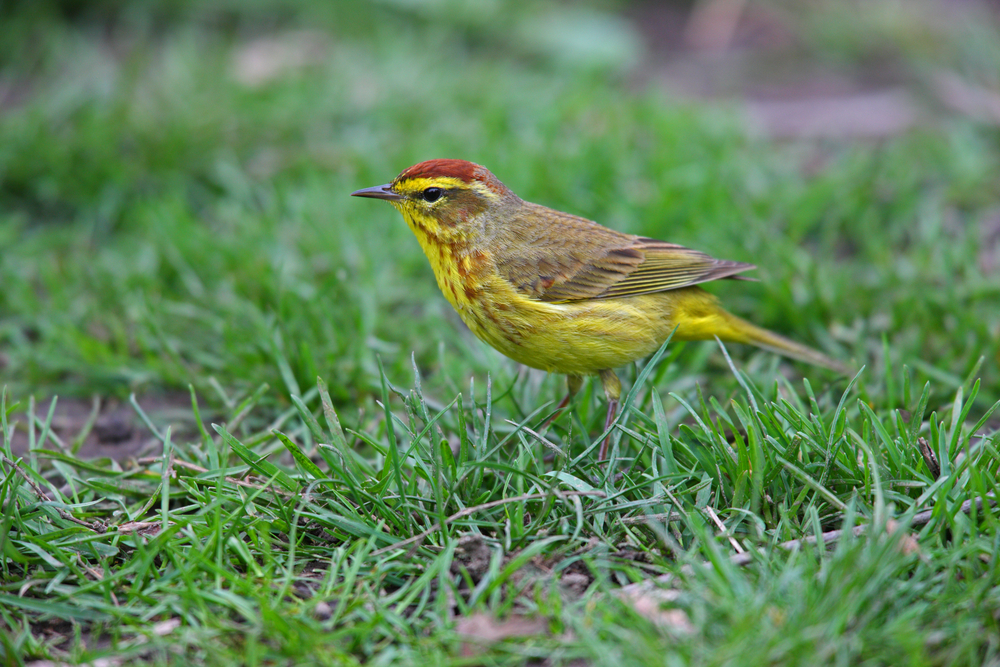
Fall bird: note brownish above, faint streaking below, yellow under tail and
on rump
Photo Credit: Bill Rowe
Yellow Palm in spring: note all yellow below with rusty-red streaking


